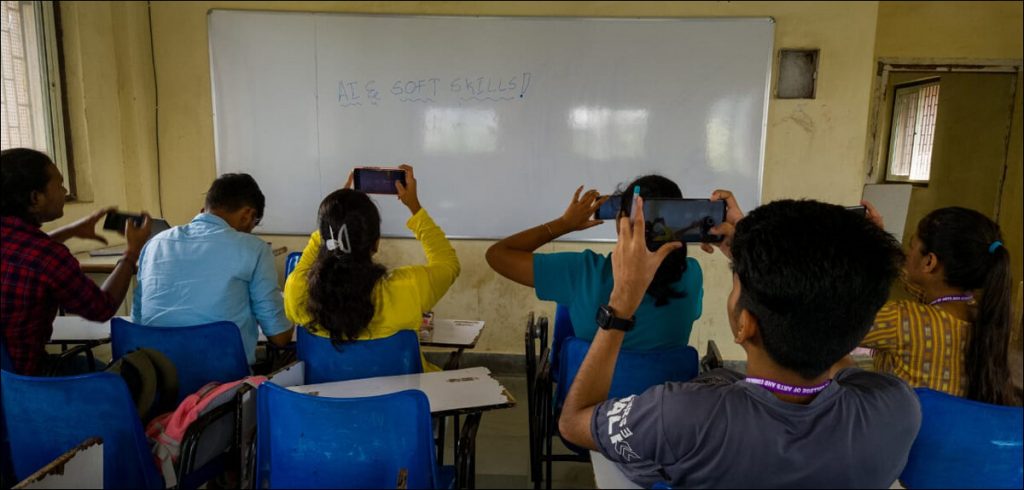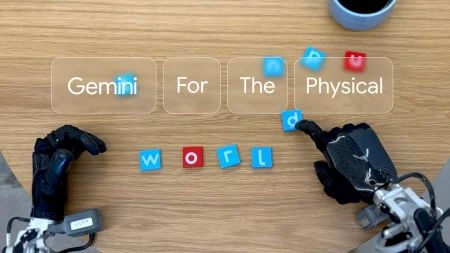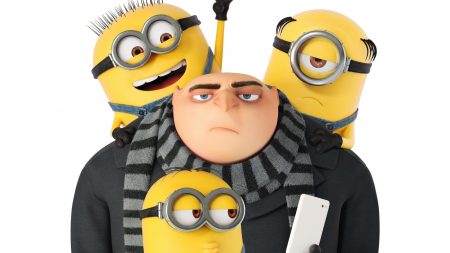Could this be the result of AI everywhere? And this in an age where making friends on Facebook, Twitter, Instagram, LinkedIn, Roblox etc seems so easy. What do you think?
Hasn’t AI become so ubiquitous these days? The commute to the college and back (I have started professing), for instance, greets me with a breed of smartphone-connoisseurs. From smartphones that could beautify pictures to apps that inform of train schedules, bus timings, payment apps etc. There’s a component of AI built right inside the smartphone. And then there’s a whole pedigree of gadgets marketing themselves around that artificial-promise – AI smartphone, refrigerator, vacuum cleaner, Dosa-maker, security device, etc.
AI indeed is helpful when one wants to ensure precision with processes that can be automated. For instance, a batter of Idli that has to be fermented precisely at 18 degrees with a specific taste sourness. Or, writing a speech that must convey a specific message. But that expectation lands me onto a curious yet nagging challenge – how do I convince my students to kick that AI on their phones and focus rather on the lecture. Last week I caught ten students doing that. This week, there are five who have hopelessly landed onto ChatGPT to learn topics such as History of Media, and Current Affairs.
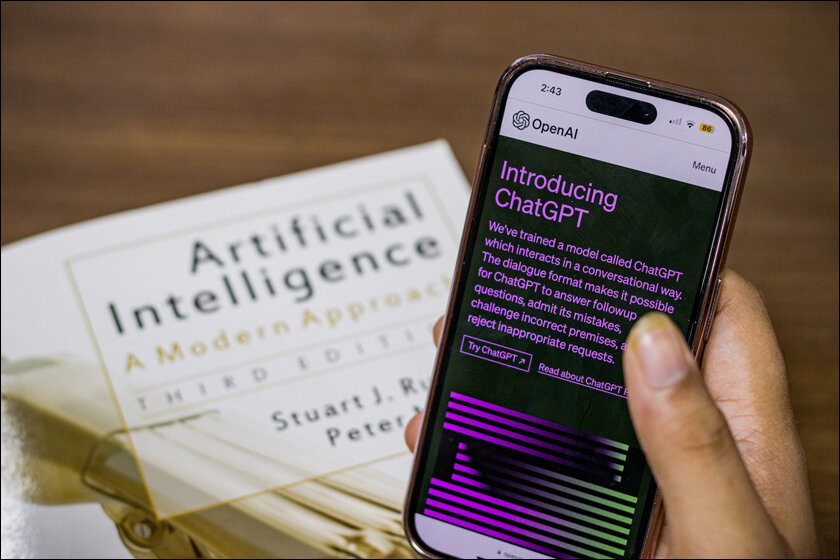
The college librarian is equally distraught that fewer students have turned up at the library to read books. To be honest I have been kind to academic textbooks for the subject of Mass Media. I would rate them at 2/10 while ChatGPT fares at 1.5/10. The expectation is for students to read upon The Hindu, The Economist, Wall Street Journal, and a multitude of reference books available on marketplaces such as JStor, Springer, etc.
While it’s easy to appreciate AI tools (read ChatGpt) for the innovative use-case, there is an unreasonable trade-off. The depletion of soft skills as a quotient. And that, both at the workplace and academic life. The bigger irony was evident when a group of students ended up prompting ChatGpt to complete an argument on how it was eroding the art of Journalism & Communication. But it seems that AI may have done more damage than one could quantify. And, at a time when organizations are setting tremendous energy and zeal in establishing newer AI-models, a casual introspection on Soft Skills seems necessary.

The Oxford dictionary defines soft-skills as a set of personal attributes that enables someone to interact effectively and harmoniously with other people. This is almost similar to how Peter Salvoy and John Mayer defined Emotional Intelligence for the first time as a social intelligence mechanism that involves the ability to monitor one’s own and others’ emotions, to discriminate among them, and to use this information to guide one’s thinking and actions.”
A whopping 91% of top executives agree on the importance of soft-skills according to a 2023 LinkedIn survey. Emotional intelligence, a part of Soft-skills training, emerged as a crucial component in research conducted by Yale’s Center for Emotional Intelligence. Harvard’s Making Caring Common project emphasizes the significance of empathy, ethical decision-making, and kindness in fostering healthier relationships and communities. Google’s Project Oxygen identified that among the eight most critical qualities of its top employees, seven were soft skills, including effective communication, empathy, and the ability to collaborate across teams.
The observation on the demand for soft-skills could also be gauged from contemporary research where significant correlation has been established between the use of AI and employee unrest. A paper recently published with the ‘International journal for environmental research and public health’ documents a correlation between mental health of workers with the awareness of AI. The researchers concluded that AI awareness was linked to employee depression.

The researchers quoted COR theory that explains four kinds of resources – objects (house), condition (marriage, status), personal (skills and traits), and energy (credit, knowledge). With most organizational processes such as hiring, appraisals, and even decision-making becoming automated, enterprises are kicking the crucial process of human-to-human communication out of the workplace.
For example, Ram and Shyam working at the same level have recently discovered the divergence in their appraisals. While Ram has received a 10 percent hike, Shyam has to be content with barely 2 percent. While the organization’s outlook page easily shows the contact details of the local HR person, Shyam can at max only reach the enterprise HR AI tool which offers zero reasonability on the burning question. Apparently installing an AI machine could backfire for the organization given how difficult it may get to compare attitudes of employees. Attitude remains an essential benchmark of comparison to countless HR processes.
Soft skills also encompass a range of interpersonal and emotional abilities, such as communication, empathy, adaptability, and teamwork, which are crucial for success in personal and professional life. The rise of artificial intelligence (AI) and automation has rightly led to concerns about the potential erosion of essential soft skills.

CAN TECHNOLOGY IMPROVE LEARNING?
Although technology for years may have enabled learning, it is difficult to prove AI’s application to learning. There are countless examples of humans using technological interfaces to teach – YouTube videos, Byjus, and other interfaces that can do everything from writing to delivering personalized notes, etc. In some areas, AI can lend a superior teaching experience – coding, basic programming, advanced machine learning, logical reasoning, natural language processing, etc. However, AI may not be substantial when the topic involves culture, art, workplace communication, or even non-verbal communication. These are aspects where notions of error can be perceived as artistic beauty.
Again, to offer an example, as of the time of writing this story, there’s an AI tool that could make one smile. But then there’s nothing that can accurately explain the reason behind Mona Lisa’s expression. Was it a smirk? Was it a grin? What was the lady signaling? As a recent entrant into the world of academics, I have been scratching my head on how to teach the art of semiotics. And, more importantly, how does a tool like ChatGpt integrate this learning into its communication framework with customers or team members?
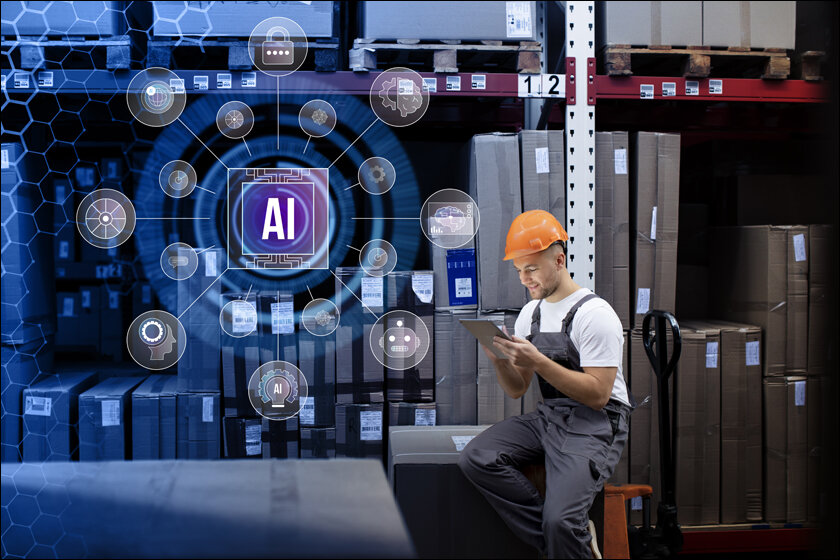
Last week on a call with my bank, the NLP based chat-system asked me to rate it on a scale of one to five. I said you are ‘so good that I could give you a minus five!’ And, machine being a machine, thought it wise to rate itself a five. It wished me a great day ahead and proceeded off to other calls. Now, this bank has been so impressed with itself that it sent me SMSs to upsell a range of services – stock broking, wealth management, deposit opening, etc. As an irate customer, I have been wanting to alienate myself with the whole brand.
This episode also tells us why despite AI tools claiming substantial progress in simulating human-like interactions, they have expressed the limitations in their efficiency. Chatbots and virtual assistants can mimic conversations, but true empathy and emotional understanding still remain off reach. Authentic soft skills require a depth of emotional connection that AI, at least for now, cannot replicate.

The increased integration of AI and automation in various industries raises concerns about the future of the job market. Routine tasks are becoming automated, freeing up human workers to focus on higher-level cognitive tasks that require soft skills. However, the risk lies in neglecting the development of these skills due to an over-reliance on AI. This could lead to a workforce with a shortage of emotional intelligence, communication issues, and interpersonal sensitivity.
Soft skills are the bedrock of effective communication, collaboration, and human interaction. While AI can offer insights into emotional intelligence and aid in some aspects of soft skill development, they cannot replace the authenticity of genuine human connection. Last month videos with the title – ‘I don’t have a friend, and I don’t have a social life’ have started trending on YouTube. Could this be the result of AI everywhere? And this in an age where making friends on Facebook, Twitter, Instagram, LinkedIn, Roblox etc seems so easy. What do you think?
In case you missed:
- None Found



